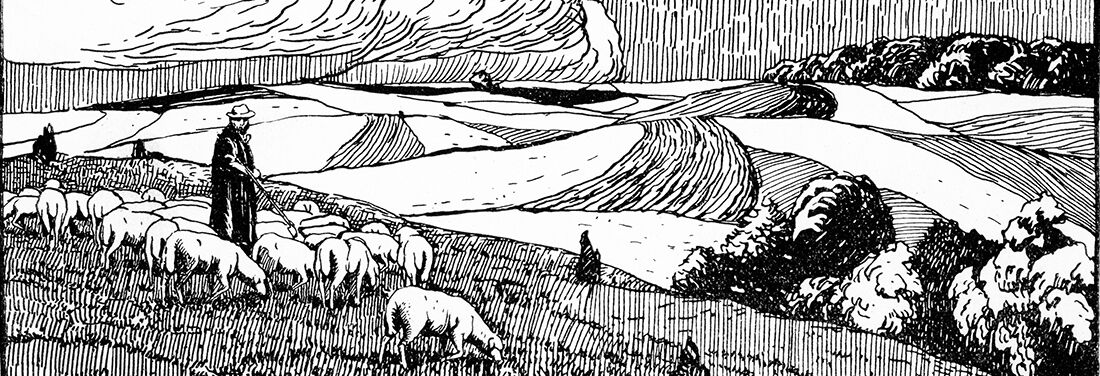Verlust und Vielfalt. Zur Parallele von Artenschutz und Denkmalschutz um 1900
The great appreciation of biological and cultural diversity in the present has its roots in the experience of an unparalleled dynamics of loss. Countless species of animals and plants have been massively reduced or irretrievably exterminated at the hands of man. Here, the change in both the natural as well as the social living conditions is often described as a historically unique process of uniformization. At the same time, diversity becomes a central motif of ecological and social movements—even if for very different reasons: from demands for the preservation of livelihoods to motifs of social justice or the increase of economic efficiency through diversity management.
From a problem-historical perspective, this constellation exists since the last third of the 19th century. Since that time, the experience of loss is closely tied to a praise of diversity. This is marked by a distinctive caesura in the relationship between man and nature: it puts an end to the optimism for progress and the belief in humanity’s task of cultivation. During this time, early ecological insights into the fragile dynamics of natural systems lead to demands for the preservation of these systems and their diversity for their own sake as well as for the sake of life on earth. Around 1900, this constellation has insofar solidified itself as it takes on institutional forms and becomes part of political programs in the protection of nature and historical monuments. Remarkably, the conservation of species resorts to very similar forms of argumentation as the protection of monuments. These movements are connected by a deep mistrust towards man’s ability to substantially shape the world. Since then, “diversity” has become a signum for Western culture’s reservation against itself. The term stands for a break with the narrative of progress and marks the suppressed or marginalized other of the dominant direction of development.
The workshop asks for forms of linkage between loss and diversity around 1900. It will focus on conceptual and narrative requirements of this linkage in philosophy, science, and literature: how is this loss specifically experienced and described? What is the background against which it is evaluated and under what criteria? Which role do arguments in favor of the value of diversity play? Is it primarily the past that is being imagined as more diverse? What experiences are connected with diversity? The workshop aims to discover the ecological imaginary in the early stages of the conservation of species and monuments.
Fig. above: “Open country” (detail), based on a drawing by Walter Strich-Chapell, in: Eugen Gradmann: Heimatschutz und Landschaftspflege. Stuttgart: Strecker & Schröder 1910.
Program
Thursday, 6 Oct 2022
11.15
- Leander Scholz and Georg Toepfer (both ZfL): Introduction
11.30
- Friedemann Schmoll (Friedrich Schiller University Jena): Erinnerung an die Natur. Verlust, Aussterben und Denkmalbewusstsein um 1900
14.00
- Nils M. Franke (Leipzig University): Das Missverständnis: Legitimationsmacht und Legitimationsmuster im Arten- und Denkmalschutz um 1900
15.00
- Rita Gudermann (Leibniz Institute for Research on Society and Space, Erkner): Landschaftsproduktion und Landschaftskonsumption. Ländliche Bevölkerung im Spannungsfeld ökonomischer Notwendigkeiten und sozialer Zwänge
16.30
- Birgit Schneider (University of Potsdam): Einmaligkeit in der Vielfalt. Bäume als Naturdenkmale in Berlin 1900–1930
Friday, 7 Oct 2022
9.30
- Ingrid Scheurmann (TU Dortmund): NaturDenkmalpflege. Zur Erhaltung des Besonderen, Stimmungsvollen und Malerischen um 1900
11.00
- Martina Oeter und Alexandra Skedzuhn-Safir (Parsberg/Brandenburg University of Technology Cottbus – Senftenberg): Lasst uns das Wilde und Ursprüngliche schützen. Natur- und Denkmalschutz um 1900
12.00
- Christina Wessely (Leuphana University Lüneburg): Das Ganze der Natur und das Ganze der Nation: Ökologische Wissenformen ca. 1871
14.30
- Eva Geulen (ZfL): ‘Friends of Laphroaig’: Vorfahren und Nachfahren im Moor
15.30
- Tanja van Hoorn (Ruhr University Bochum): Zweifel im Naturgürtel, “[k]ein Bild aus dem Märchen”. Imaginationen bedrohter Vielfalt um 1900
17.00
- Ulrike Vedder (HU Berlin): Im Naturkundemuseum: Retten, Sammeln, Ausstellen, Erzählen
